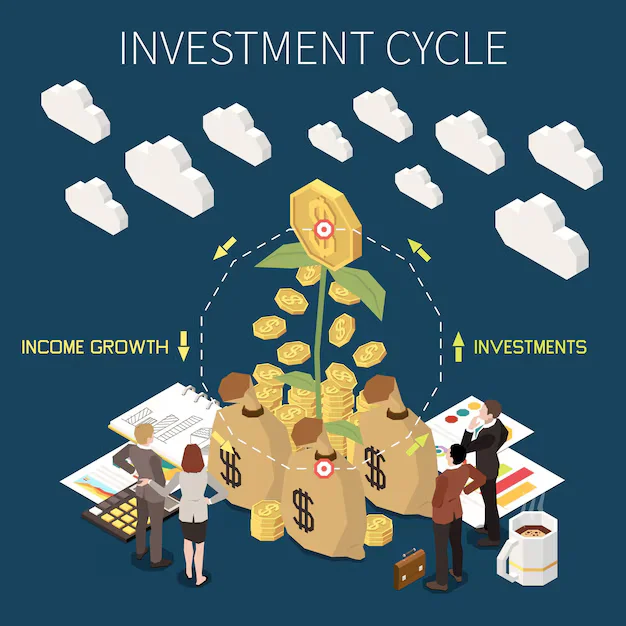How to track your investing activities
As a business owner, you’re likely hyper-focused on the cash flow from managing your investment accounts, ensuring a broad range of financial accounts track investment performance effectively. That’s because most businesses are more interested in profit generation than anything else.
However, there’s hardly any business without any form of investing activities. And why is that? Because long-term investments are necessary if a business must scale financially. In other words, keeping track of your investing activities is the metaphorical engine power of every thriving business.
Setting the correct expectations is one of the most essential things you can do while managing your assets. A percentage return that is deemed good in one market may be judged weak in another. There is no one, constant norm, such as all stocks returning a certain amount each year.
Performance criteria, on the other hand, are shifting objectives. As a result, It is critical to compare data and evaluate an investment in the context of your overall portfolio plan, as well as against the proper benchmark indices, essential for informed investment needs.

Here are three critical features for keeping track of your money and portfolio's performance through advanced portfolio management apps, enhanced reporting functions, and robust portfolio trackers.
If you're ready to start investing activities or have been engaged for a while, ensure you're using some of the most effective tools like a portfolio tracker and middle ground financial apps available to track your investments, maintaining a keen eye on your brokerage account.
You may always contact your financial adviser for updates and reports, but many now recommend web-based tools and applications, serving as a critical feature to assist you in keeping track of all your accounts, including taxable accounts and broker Options.
While you now have access to all of this information, keep in mind that you do not have to check your accounts every day - or even every week. Long-term investors should stay informed, but avoid closely watching their portfolio's performance fluctuate, which could lead to premature decisions like selling assets in a panic, undermining their investment strategy.
What are investing activities?

They are integral to a company’s cash flow, prominently reflected in the cash flow statement, which helps measure performance against benchmark indices and guides investment checkup processes. Cash flow is the amount of money that comes into or leaves a company.
Operating, Investing, and Financial activities represent the three fundamental categories of cash flow, each playing a distinct role in shaping investment goals and portfolio holdings for both new investors and advanced investors.
Those cash activities related to assets that are not easily liquidated are investing activities. Assets that aren’t easily liquidated, mostly encompassing long-term assets or noncurrent assets, form the backbone of strategic investment decisions and reflect a company's investment strategy, crucial for risk metrics evaluation and portfolio review.
When a company makes long-term investments whose value will not be fully realized within the accounting year, such is known as a noncurrent asset. Therefore, it’s safe to say that all financial gains and expenses made on long-term assets (noncurrent assets) are investing activities.
Investing activities as an element of cash flow

As an element of cash flow, they are reported as “cash flow from investing activities” are crucial for tracking investment decisions and understanding the asset class performance within your investment strategy.
This report is usually an integral component/section of every company’s statement of cash flow. It reports the amount a business spends or realizes from long-term investments within a given time. An increased cash flow from investing activities seems counterintuitive.
But, it goes a long way to show how much a business is committed to long-term investments. If an enterprise decides to increase investment In property, plant, and equipment as fixed assets. It would seem that such an enterprise has incurred a negative cash flow from investing activities.
However, in the long run, it becomes evident that the enterprise ended up accumulating funds for the future. More importantly, we can use cash flow from investing activities to rate a company’s growth.
What Is Investing Activity Cash Flow?
Cash flow from investing activities (CFI) is a critical section of the cash flow statement that indicates how much cash was earned or spent from various investment-related activities, serving as a critical feature for assessing past performance and managing taxable accounts.
Investing activities include the acquisition of physical assets, the purchase and selling of assets like mutual funds or individual securities, crucial for managing brokerage accounts and aligning with your targeted investment strategy.
Negative cash flow from investment activities, on the other hand, often reflects considerable investments in the company's long-term health, such as R&D, and is seen as a positive sign by most investors using excel spreadsheets to track investments and capital gains.
Before delving into the various forms of positive and negative cash flows from investing operations, it's essential to understand where a company's investment activity fits into its financial statements, guided by insights from a financial writer, tax professional, and the free version of financial analytics tools providing real time data.
The balance sheet summarizes a company's assets, liabilities, and owner's equity as of a certain date. The income statement summarizes a company's revenues and costs over a given time period. The cash flow statement fills the gap between the income statement and the balance sheet by displaying how much cash is earned or spent on operating, investing, and financing activities during a given time period.
Examples of investing activities
Financial activities considered as investing activities vary for every investment portfolio and depend on the nature of the asset allocation and mutual fund transactions. As a result, there is no metric for what should and shouldn’t be included here.
A reliable method for understanding what to include in all your investments will be analyzing the balance sheet for the period, focusing on stock portfolio values and risk tolerance levels. And taking into account the differences among noncurrent assets for the time.
Common financial activities to include as investing activities:
-
Capital expenditures: The sales and purchase of property, plant, and equipment significantly impact the portfolio value, aligning with strategic investment strategies and diversifying through exchange traded funds.
-
Securities: Funds managed within multiple portfolios, received from and invested in stocks and bonds of other companies, reflecting a comparing data approach and target allocation strategies.
-
Loans: This activity involves managing the principal sum on loans from other companies, frequently reviewed on platforms like Yahoo Finance to assess key features of the financial market. Either a company is collecting the amount loaned or giving out an amount as a loan.
Common financial activities not included
-
Funds realized from selling a land
-
Funds, both income, and expenditure relating to day-to-day business operations
-
Money paid for an investment in another company
-
Funds resulting from interests and dividends
How to track your investing activities

As earlier explained, investing activities are a category of cash flow on the cash flow statement of a business. So, tracking these activities would mean tracking the cash flow resulting from investing activities.
Bearing in mind that other forms of cash flow exist; like operating and financial activities. In this case, our focus is on cash flow due to the company’s long-term assets or noncurrent assets. Essentially, both small and big businesses engage in long-term investments for the future.
Optimize your cash flow statement
Generally, cash flow due to investing activities is usually reported as a negative number on the cash flow statement. And maybe misconstrued as poor performance for a business. In most cases, a negative cash flow due to investing activities depicts some kind of reinvestment or company expansion.
This has to do with all funds the business transacts that will not yield value in the short run and are not easily liquidated. Examples include but are not limited to intellectual property, real estate, and equipment. Tracking your cash flow makes it so that you are sure of when funds come in to replace the funds that went out of the business.
Undertake scheduled capital expenses
Because these activities heavily involve long-term transactions, keeping track of such investments is a no-brainer. Capital expenditures create cash outflow while sales of marketable securities and other assets create cash inflow. It is important to undertake capital expenses on a schedule. This beats having to undertake huge expenses willy-nilly that can cause a business to go broke.
Make use of cash flow projections
This rides the thin line between a business plan and cash flow projections. However, you want to focus more on the cash projection beginning from cash in hand. You can always set up an accounts receivable calendar to track funds coming into the business. This financial organization and documentation make it easier for investors to get a good grasp on your investing activities. And ultimately monitor the growth and profitability of the business.
What Pay Stubs Now can do for your business
Paystubsnow is an online paystub generator that oversees all financial documentation for businesses and individuals. You can generate paystubs, generate invoices for free, 1099, and w-2 forms electronically for your business. In addition, the financial documents that you have generated are sent to your email within seconds.

